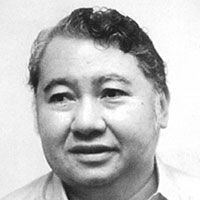Mga dapat pang malaman sa esophageal cancer

December 30, 2001 | 12:00am
TINALAKAY ko na ang tungkol sa esophageal cancer noong Dec. 2, 2001 subalit marami pang dapat malaman tungkol sa sakit na ito. Muli ko itong binalikan para sa kaalaman ng marami at mga mambabasa.
Sa kasalukuyan, tinatayang may 5,000 bagong kaso ng esophageal cancer at ang male to female ratio ay 3:2. Ang tumor sa upper third esophagus ay karaniwan sa mga babae at kadalasang ang tinatamaan ay may edad 60 hanggang 70. Ayon sa mga report, pinakamataas ang insidente ng sakit na ito sa China at Iran.
Ang paninigarilyo ang isa sa mga panganib at pinaniniwalaang dahilan ng esophageal cancer. Ang regular na pag-inom ng alak ay pinaniniwalaan ding dahilan. Ito ay sapagkat nagkakaroon ng chronic irritative effect sa mucose. Ang tinatawag na carcinogenic contaminants sa mga nakalalasing na alak ay pinaniniwalaang dahilan din ng pagkakaroon ng sakit na ito.
Barretts esophagus is characterized by glandular metaplasia of the squamous epithelium of the lower third of the esophagus, usually in response to chronic gastro-esophageal reflux from a hiatus hernia. Patients are at risk of developing an adenocarcinoma of the esophagus.
In achlasia there is chronic stasis and pooling of food and secretions in a delated esophagus due to a loss of esophageal motility. The increased cancer risk is due to prolonged contact of the mucose with carcinogens within the food or produced from food by the action of bacteria.
Patterson-Brow-Kelly syndrome (Plumme-Vinson Syndrome) is characterised by koilionychia, iron deficiency anemia, the presence of an esophageal web in the third of the esophagus on barium swallow and is usually seen in woman. It leads to a carcinoma of the upper third of the esophagus in the post-cricoid region.
Tylosia is a rare, dominantly inherited condition characterised by palmar and plantar hyperkeratosia and a strong predisposition to esophageal cancer.
Binabati ko ang lahat ng isang masagana at mapayapang Bagong Taon!
Sa kasalukuyan, tinatayang may 5,000 bagong kaso ng esophageal cancer at ang male to female ratio ay 3:2. Ang tumor sa upper third esophagus ay karaniwan sa mga babae at kadalasang ang tinatamaan ay may edad 60 hanggang 70. Ayon sa mga report, pinakamataas ang insidente ng sakit na ito sa China at Iran.
Ang paninigarilyo ang isa sa mga panganib at pinaniniwalaang dahilan ng esophageal cancer. Ang regular na pag-inom ng alak ay pinaniniwalaan ding dahilan. Ito ay sapagkat nagkakaroon ng chronic irritative effect sa mucose. Ang tinatawag na carcinogenic contaminants sa mga nakalalasing na alak ay pinaniniwalaang dahilan din ng pagkakaroon ng sakit na ito.
Barretts esophagus is characterized by glandular metaplasia of the squamous epithelium of the lower third of the esophagus, usually in response to chronic gastro-esophageal reflux from a hiatus hernia. Patients are at risk of developing an adenocarcinoma of the esophagus.
In achlasia there is chronic stasis and pooling of food and secretions in a delated esophagus due to a loss of esophageal motility. The increased cancer risk is due to prolonged contact of the mucose with carcinogens within the food or produced from food by the action of bacteria.
Patterson-Brow-Kelly syndrome (Plumme-Vinson Syndrome) is characterised by koilionychia, iron deficiency anemia, the presence of an esophageal web in the third of the esophagus on barium swallow and is usually seen in woman. It leads to a carcinoma of the upper third of the esophagus in the post-cricoid region.
Tylosia is a rare, dominantly inherited condition characterised by palmar and plantar hyperkeratosia and a strong predisposition to esophageal cancer.
BrandSpace Articles
<
>
- Latest
- Trending
Trending
Latest
Trending
Latest
Recommended






















